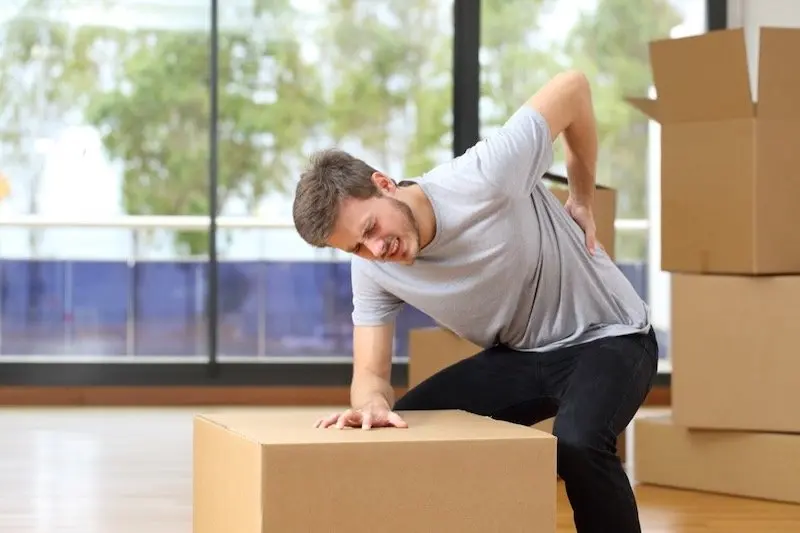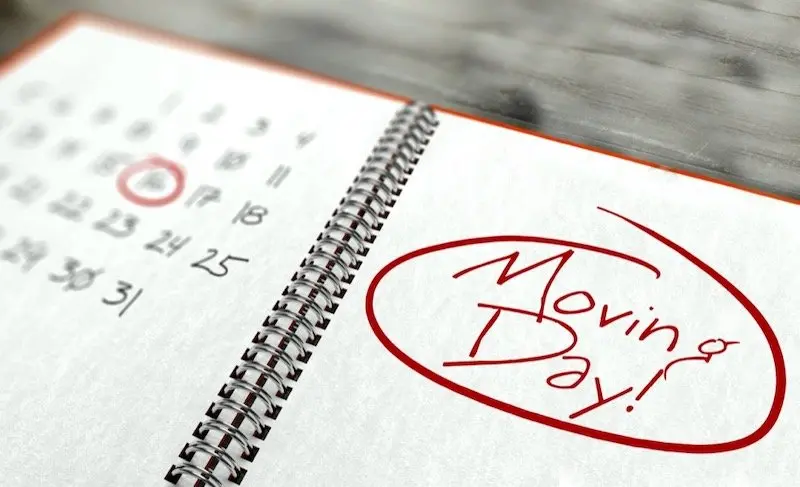 Many people consider moving to be one of the most taxing or difficult things to do in their homes. It's not surprising why people hold this view: The process of packing takes weeks, and moving day can be highly stressful. The anxiety about moving can lead people to cut corners or procrastinate on packing, thinking they will be better able to push through in the last week. Unfortunately, this attitude can lead to several mistakes during packing and moving. With this guide, people will know what to avoid while they get ready.
Many people consider moving to be one of the most taxing or difficult things to do in their homes. It's not surprising why people hold this view: The process of packing takes weeks, and moving day can be highly stressful. The anxiety about moving can lead people to cut corners or procrastinate on packing, thinking they will be better able to push through in the last week. Unfortunately, this attitude can lead to several mistakes during packing and moving. With this guide, people will know what to avoid while they get ready.
Table of Contents
Mistakes That Lose Time
Homeowners may find themselves in a situation where they do not have enough time to complete the moving process. These mistakes can cause delays, leading to insufficient progress in the final weeks before moving day. They can even result in lost items.
Not Paring Down Possessions
When people do not have enough time to sort, they may think that packing everything is easier. However, loading everything into boxes adds extra time for:
- Packing
- Loading
- Unloading
- Unpacking
In most cases, paring down possessions can save money on packing materials and transportation costs as well.
Not Making a Moving Checklist
The moving process usually takes several weeks from start to finish. To know what you should do in which order, research online moving checklists. These lists make it easier to know which areas to cover and when.
Not Having a Realistic Timeline
Plan to spend one full day packing each room in the home. However, many people usually do not have the time or energy to spend the whole day packing. As such, it may make more sense to break up a full day's worth of packing into a week. It's often easiest to start packing items used the least, especially things currently out of season. With this approach and a goal of filling at least a handful of boxes every day, people can avoid getting overwhelmed.
Not Staying Organized When Packing
Organization while packing is crucial. Create a list of things you need for essentials and keep them aside. That way, you have everything you need for safe travel to your new home.
Clearly label the boxes on multiple sides with the contents and the room. Investing time into labeling can make the unloading and unpacking processes much quicker. Those who aren't hiring movers to load or transport their belongings should also learn how to pack correctly to improve efficiency and avoid unloading unexpectedly and reloading correctly.
Not Knowing What's Safe to Move
There are a few types of items that moving companies will not accept. They may include:
- Hazardous materials, like gasoline, pressurized oxygen, or cleaning products
- Food
- Plants
- Irreplaceable, high-value possessions
Primarily, the items on this list relate to the safety of transport.
Not Knowing What's Donatable
Those who plan to schedule a pickup from a local charity for donation should confirm which items are acceptable. Everyday things that organizations will not take include:
- Stained or damaged items
- Baby furniture
- Computers
- Appliances
Homeowners may need to plan to dispose of these items appropriately.
Mistakes That Lose Money
Many moving mistakes can cost money. Not taking enough time to create a detailed cost analysis or preparation checklist leads to delays. By failing to figure out this information in advance, you may have to pay more for services or spend more than expected.
Not Doing a Moving Cost Evaluation
 A cost evaluation is an essential first step for those still debating the merits of a DIY move versus hiring professional movers. Many people believe that they can save a lot of money by doing the work themselves.
A cost evaluation is an essential first step for those still debating the merits of a DIY move versus hiring professional movers. Many people believe that they can save a lot of money by doing the work themselves.
However, they still have to pay for supplies, equipment, vehicles, and the cost of transport. Before making a decision, add up what you expect to pay for a DIY move and compare it to the price of hiring professional movers. Doing so will help determine whether or not DIY is an effective method to save money.
Not Researching Moving Companies
Those who plan to hire movers should get quotes from multiple companies. They should ask about:
- Detailed costs for the move
- Limitations on items
- Other services, like packing or short-term storage
- Moving timelines
Getting in-person estimates makes it easier to choose the company that's the best fit.
Not Booking Moving Services at the Right Time
Like any other service-based company, moving companies have busy seasons. Those who fail to schedule moving services sufficiently in advance may discover no open times for their chosen date. As a general rule, book the move at least a month or two in advance. Booking in the middle of the month, instead of at the end, or mid-week, instead of the weekend, can help minimize availability problems. Otherwise, find out about the moving company's cancellation policy if the company overbooks and cannot meet the appointment.
Not Having Insurance
Moving companies often carry basic insurance for lost or damaged items, but it's usually much less than people expect. In the typical case, moving companies offer released value for these items. This value provides a certain amount of money per pound of the item's weight.
For lightweight but valuable items, such as technology, jewelry, or artwork, the released value may only cover a small portion of the total value. Those who must transport high-value belongings may want to ask about obtaining extra coverage to recover the full value of those things, just in case.
Not Knowing Where to Get Packing Supplies
Packing supplies can cost several hundred dollars, especially for a home that is medium-sized or larger. Expect to need at least a dozen or more boxes per room. Boxes cost between $1 and $10, depending on the type.
Additionally, you may need packing paper, tape, bubble wrap, and more. It's possible to get some items free from other sources. Asking local stores, friends, and family for spare boxes may be an effective way to save money. However, pots, suitcases, or bins minimize the need for boxes.
Sign Up for free Get the first to receive the latest listing updates, save favorites & much more by signing up.
If you already have in account, SIGN IN.
Not Using Enough Packing Supplies
People may create problems by failing to pack their items properly. Although there are several types of packing materials, especially for delicate or high-value items, many things in the home may work as well. For example, use socks to protect glassware instead of packing paper or bubble wrap. You can wrap old sheets or blankets around furniture to minimize dents or scratches. With these ideas, people can save their money and buy things for their new home.
Not Protecting Your Current Home
To keep the current home in ideal condition throughout the moving process, consider:
- Laying down cardboard to move furniture or appliances
- Using dollies and carts to move heavy items out of the house
- Taking extra care when moving through doorways
A little extra effort can minimize damage.
Not Factoring In Moving Equipment
People need a variety of moving equipment, especially if they're doing a DIY move:
- Appliance and furniture dollies
- Hand trucks
- Moving blankets
- Flooring pads
- Straps
For anything larger than a two-bedroom apartment, consider a moving truck that's 20 to 26 feet. It's usually better to rent a larger truck, if possible.
Not Knowing All the Costs of DIY
It's easy to forget there's a variety of costs involved with a DIY move. Create a budget for:
- Packing materials
- Renting a vehicle
- Loading and unloading the truck
- Transportation costs, like gasoline
- Meals and lodging on the road
- Extra fees for transporting other vehicles
While people may expect their friends and family to help them load or unload, this is not always the case. They may also need or choose to hire movers to help load to protect their items.
Mistakes That Cause Stress
Some issues surrounding the moving process can cause stress. These mistakes can make it difficult to receive services or without sufficient help on moving day. Fortunately, these mistakes are generally easy to avoid.
Forgetting to Update Addresses, Utilities, & Other Services
Updating an address starts with contacting the post office but may include changing the address with utilities, online subscriptions, creditors, and online purchasing sites. Those moving to a home in the same city may continue the same utilities and other services at their new homes. In this case, they might need to call a few weeks in advance to request a change of service. Otherwise, plan to schedule a shutoff of these services to begin the day after the move.
Forgetting to Take Measurements
Before planning to load or unload large items, take measurements in your current and new homes. Doorways, staircases, and entryways may make it difficult to take out or put in furniture or appliances. You may need to choose a different route or plan not to take the item.
Underestimating DIY Effort
DIY is usually the most affordable, but people often fail to account for the additional effort they must put in. The process of moving may take up as much as an entire week or more of a person's time. If they do not allow themselves to focus on the move, they may discover they have forgotten essential tasks like scheduling services at the new home. Additionally, it's very difficult or impossible to move entirely by yourself. You may need assistance from those willing to provide it.
Not Securing Help Far Enough in Advance
Those who want to ask friends or family members to help should avoid alienating them in the process. Typically, friends want plenty of advance notice and the ability to decline without risking the friendship. Taking people's needs into consideration can avoid conflict.
Forgetting About Pet Requirements
Those with pets must also make plans for the pets to relocate with as little stress as possible. At least a month or two in advance of the move, consider the following tasks:
- Schedule a veterinary visit to identify and address any existing health concerns
- Obtain current veterinary records, especially for people who will be finding a new vet near the new home
- Purchase or prepare an appropriate travel carrier
- Research effects of travel and moving on the particular type of pet
- Create a list of essentials the pet will need during transport
- Research pet-friendly lodging for trips that take more than a day
Pets can often sense something is off in the home, and their behavior may change as a result. Minimize the stress on your pets by maintaining their regular routines as much as possible. Designate a specific area in the home last to be packed and ready for moving to create stability. While in transit, check on your pets regularly and provide comfort to them as needed.
Mistakes That Cause Injury or Damage
Some mistakes people make during moving are genuinely risky. Loading a moving truck is complex, and those who do not do it correctly put themselves at risk of injury or damage to the items.
How to Safely Load a Truck
 Those with extensive experience loading trucks may start loading as soon as they have a few items outside. Those moving by themselves for the first time may prefer to get most of the belongings out of the house before determining the best packing order. Although weight is usually the biggest determiner for packing order, reserve high-priority items to go in the truck at the very end. That way, you can get them out quickly and as needed.
Those with extensive experience loading trucks may start loading as soon as they have a few items outside. Those moving by themselves for the first time may prefer to get most of the belongings out of the house before determining the best packing order. Although weight is usually the biggest determiner for packing order, reserve high-priority items to go in the truck at the very end. That way, you can get them out quickly and as needed.
As a general rule, select the largest and heaviest items for placement in the truck first. Use a ramp and appropriate dollies to protect yourself and large items as you move them. Medium-weight furniture like tables and chairs should be disassembled and loaded next. The end may involve mostly boxes, which you may want to pack as tightly as possible. While loading, evaluate how much weight is on one side of the vehicle compared to the other. Without balancing the load on each side or securing these items, people may end up with significant damage.
How to Safely Pack Small & Large Appliances
People can avoid damage or difficult reassembly if they take care of their small and large appliances. Small appliances may be relatively simple to pack. In some cases, people can disassemble them partially and place them in a box for moving. Remove any items on the exterior that could fall off, place those items in a bag, and tape the bag to the appliance so that it does not get lost. Small appliances that have blades or sharp edges, like a food processor, may need to be wrapped in bubble wrap to avoid cutting the box during moving.
Large appliances may require additional preparation. To start, clean the appliance, empty it of any food, and unplug it hours in advance of the move. Appliances that run on fuel should be clean before packing. Hoses on dishwashers and clothes washers should be disconnected and drained as well. Research in advance whether or not to place a large appliance on its side for transport.
Keep refrigerators and freezers upright for the move — otherwise, you risk damaging the equipment.
How to Safely Pack Electronics
Packing electronics can be a safety issue. Electronics can be prone to damage as a result of extreme temperatures. Some of the components inside electronics, like batteries, can pose a safety hazard during transport. Minimize most problems surrounding packing electronics by doing the following:
- Back up data
- Select packing materials designed for electronics, such as static-free bubble wrap
- Clean electronics and place them in a dry box free of dust
- Remove batteries, and dispose of used batteries before moving
- Package discs and ink in special bags to minimize temperature-related damage
- Wrap electronics in plastic
- Identify which cables go to each electronic device and pack them together
- Identify electronics boxes, particularly when hiring professional movers
For expensive or difficult-to-replace electronic devices, people should evaluate how they would prefer to move them. It might be easier and less stressful for people to transport their laptops and computers in many cases.
How to Pack to Spare Your Back
Moving is a physically demanding process that can put people at risk for injury, mainly if they try to do it by themselves. The packing process may make moving harder or easier, depending on the choices that people make. Most people will have a better time and a lower risk of injury if they do the following:
- Save heavy items for small boxes
- Limit box weight to something they can lift reasonably, usually a maximum of 40 to 50 pounds
- Perform exercises to strengthen the lower back and arms
- Wrap knives and sharp items thoroughly
- Use hand-carts and dollies to minimize lifting time
- Take breaks regularly
Develop a plan in advance for loading the vehicle, considering heavy items like furniture or appliances.
Start Planning Your Move Today
 Moving is a complicated and arduous process that can take several weeks, if not months, to prepare. Those who have not done the appropriate amount of preparation in advance may discover the process is much harder, with many obstacles along the way.
Moving is a complicated and arduous process that can take several weeks, if not months, to prepare. Those who have not done the appropriate amount of preparation in advance may discover the process is much harder, with many obstacles along the way.
Fortunately, many of these common mistakes related to packing or moving can be avoided, especially if people give themselves sufficient time to get ready for it. By using these tips, people can lower their risk of injury and minimize the stress and money wasted during moving.
Ready to make the move to Austin, Texas? Click here to speak to a consultant!
Additional Reviews
- https://www.mymovingreviews.com/move/cut-moving-costs/
- https://www.mentalfloss.com/article/85046/8-common-moving-mistakes-and-how-avoid-them
- https://www.moving.com/tips/minimalist-move-how-to-lighten-your-load-before-you-pack/
- https://www.mymovingreviews.com/move/moving-checklist/
- https://www.removalreviews.co.uk/move/how-to-make-a-moving-checklist/
- https://updater.com/moving-tips/the-most-epic-moving-checklist-in-the-history-of-moving-checklists/
- https://www.mymovingreviews.com/move/packing-timeline/
- https://www.mymovingreviews.com/move/how-to-get-motivated-to-pack-for-moving/
- https://www.movoto.com/blog/how-long-does-it-really-take-to-pack-for-a-move/
- https://www.moving.com/tips/moving-essentials-bag-what-you-need-to-pack/
- https://megansmoving.com/avoid-these-moving-mistakes/
- https://www.removalreviews.co.uk/move/moving-mistakes-to-haunt-you/
- https://www.moving.com/tips/heres-what-your-movers-wont-move/
- https://www.moving.com/tips/moving-non-allowable-items-not-to-pack/
- https://www.mymovingreviews.com/move/moving-non-allowable-items/
- https://www.moving.com/tips/your-guide-to-the-pre-move-purge/
- http://donationtown.org/acceptable-donations/
- https://www.budgetdumpster.com/resources/how-to-dispose-of-furniture.php
- https://www.mymovingreviews.com/move/moving-budget-checklist/
- https://www.bhg.com/home-improvement/moving/moving/how-to-move-without-professional-help/
- https://www.mymovingreviews.com/move/choose-moving-company/
- https://www.moving.com/tips/3-types-moving-estimates-need-know/
- https://www.mymovingreviews.com/move/top-moving-mistakes/
- https://www.moving.com/tips/5-important-questions-to-ask-before-hiring-a-moving-company/
- https://www.mymovingreviews.com/move/deciding-on-a-moving-date/
- https://www.allied.com/moving-resources/family-guide-to-moving/best-time-to-move
- https://www.movebuddha.com/blog/when-movers-cancel/
- https://moving.tips/bonus-tips-and-tricks/movers-cancelled-last-minute/
- https://www.mymovingreviews.com/move/top-moving-mistakes/
- https://www.moving.com/tips/8-worst-moving-mistakes-to-avoid/
- https://www.moving.com/tips/take-photos-prior-moving/
- https://www.moving.com/tips/how-much-do-moving-boxes-cost/
- https://www.mymovingreviews.com/move/get-boxes-for-moving/
- https://www.moving.com/tips/36-moving-hacks-faster-easier-less-stressful-move/
- https://www.moving.com/tips/bizarre-moving-tips-that-really-work/
- https://www.mymovingreviews.com/move/cut-moving-costs/
- https://www.mymovingreviews.com/move/prevent-property-damage/
- https://www.moving.com/tips/moving-supplies-what-you-need-and-where-to-find-it/
- https://www.mymovingreviews.com/move/self-moving-mistakes-to-avoid/
- https://www.mymovingreviews.com/move/moving-equipment-and-tools-when-moving/
- https://www.mymovingreviews.com/move/moving-budget-checklist/
- https://www.bhg.com/home-improvement/moving/moving/how-to-move-without-professional-help/
- https://www.mymovingreviews.com/move/forgotten-moving-costs/
- https://www.moving.com/tips/step-by-step-guide-to-changing-your-address/
- https://www.mymovingreviews.com/move/one-sentence-moving-house-checklist/
- https://www.mymovingreviews.com/move/change-address-when-moving/
- https://www.mymovingreviews.com/move/transfer-utilities-when-moving/
- https://www.mymovingreviews.com/move/create-a-floor-plan/
- https://www.mymovingreviews.com/move/furniture-does-not-fit-door/
- https://www.moving.com/tips/10-mistakes-to-avoid-when-moving/
- https://www.move.org/hire-mover/
- https://www.movers.com/moving-guides/diy-move-vs-professional-movers.html
- https://blog.unpakt.com/much-diy-move-really-cost/
- https://www.mymovingreviews.com/move/self-moving-mistakes-to-avoid/
- https://www.removalreviews.co.uk/move/get-friends-to-help-you-move/
- https://www.mymovingreviews.com/move/one-sentence-moving-house-checklist/
- https://www.mymovingreviews.com/move/how-moving-affects-cats/
- https://www.mymovingreviews.com/move/moving-with-birds-to-a-new-home/
- https://www.moving.com/tips/moving-safety-tips-everyone-should-know/
- https://www.moving.com/tips/10-mistakes-to-avoid-when-moving/
- https://www.mymovingreviews.com/move/avoid-injuries-when-moving/
- https://www.mymovingreviews.com/move/pack-electronics-for-moving/
- https://www.mymovingreviews.com/move/pack-home-appliances/
- https://www.moving.com/tips/must-know-tips-for-moving-with-major-appliances/
- https://www.pensketruckrental.com/renting-from-penske/how-to-load-a-moving-truck/
- https://www.mymovingreviews.com/move/how-to-load-a-moving-truck/

Leave A Comment